A Spark to Light 65 “Tricolori” Candles
Report and photos by Gabriele Rivera
October 3, 2025
In Italy, until a few years ago, the sixty-fifth birthday was the goal to get the often longed retirement. But if the toastee is the 313th Aerobatic Training Group, the attitude is quite different: retirement is an event to be postponed as far as possible! Whereas the rotation of pilots and mechanics ensures an unlimited time horizon, the matter changes for the aircraft assigned to an aerobatic team, limited by a predetermined number of flight hours. These can sometimes be incremented through more or less extensive interventions, but the aircraft are nonetheless destined to be replaced.
And this is the sore point that has plagued for years all those European teams flying jets, as they see the moment of major decisions approaching: first of all, the assessment of the economic viability of keeping an aerobatic team in service, whose final result often leads to the choice of switching from jets to turboprops. Another point that some teams will have to relinquish in the coming years is the opportunity to proudly showcase to their audiences, at home and abroad, an aircraft produced by their national aerospace industry. The Alpha Jet, Hawk, Aviojet, and Iskra are no longer in production and have no successors planned.
The outlook is different, however, for the Frecce Tricolori: although their current aircraft, the MB-339 (in service since 1982), is nearing phase-out, her successor—the Leonardo M-346 Master—was already announced last year. Many had hoped to witness a joint flyover of the Frecce and the Master during the two-day reunion, but the time was not yet ripe. Instead, a mock-up of the aircraft was displayed with a PAN livery designed by Pininfarina, a name that needs no introduction. According to current plans, the team should complete the transition to the new aircraft in 2028.

Considering that for at least 15 years the meetings to celebrate Frecce’s anniversaries have been held every five years, the one just concluded, celebrating the 65th aerobatic season, was the last to feature the MB-339. To mark the event, some changes have been made to the aircraft’s livery: on the tail was placed the commemorative logo, on a green, white, or red background (blue for the leader’s aircraft, Pony 0), depending on the plane’s position in the formation (and therefore the color of the emitted smoke). The logo was superimposed over the list of names of all the pilots who have been part of the team since 1961. Finally, a white stripe begins in front of the cockpit and runs along the fuselage top, joining the tail logo.
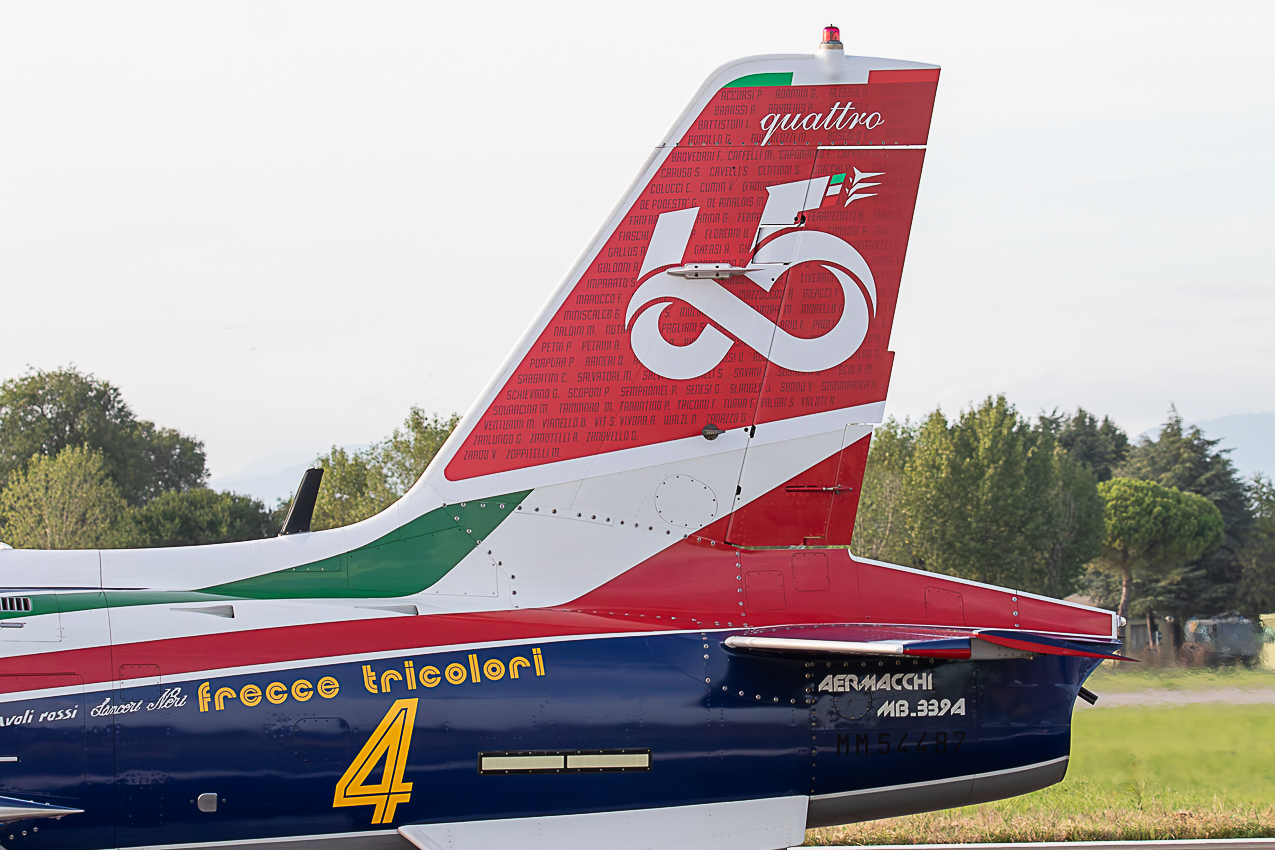
The reunion was attended by several European teams, both military and civilian, as well as historic aircraft belonging to renowned private collections (Jonathan Collection, Volafenice, and The Flying Bulls); the Italian Air Force was present with various assets, among them the Reparto Sperimentale Volo (Test Flight Squadron) demo aircraft. Understandably, following the fatal accident at Radom involving Major Maciej “SLAB” Krakowian, Poland canceled the participation of the Orlik Aerobatic Team, while Spain took part exhibiting an F-18.
The meeting enjoyed a splendid weekend of sunshine, allowing formations to perform their full programs at altitude. The flying schedule, almost identical on Saturday and Sunday, began in the morning with a SAR demo by the Italian Air Force’s HH-139 helicopter. This was followed by a historical parenthesis featuring a pair of flying replicas, the Caproni CA.3 and the SPAD XIII, both belonging to the Jonathan Collection—a unique one, fruit of the commitment and dedication of its founder, Giancarlo Zanardo, and his many collaborators. Watching faithful reproductions of World War I aircraft flying against a backdrop of the mountains that once hosted fierce battles evokes emotions hard to experience elsewhere.

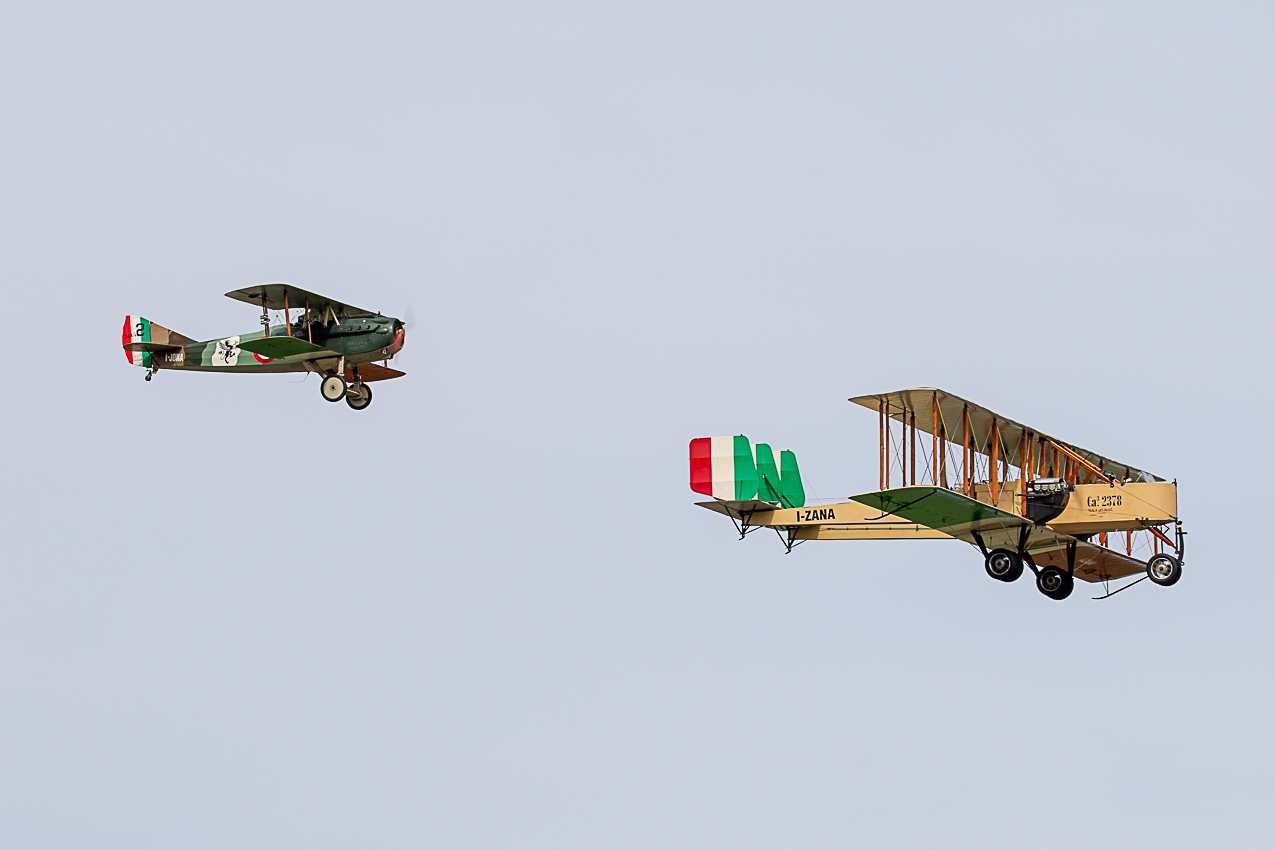
For a different reason, but equally engaging, can not leave indifferent the performance of the Wefly Team: two of its three pilots (Alessandro Paleri and Marco Cherubini) are paraplegic since many years, yet that did not stop them from fulfilling their dream of flying and later performing aerobatics. Thanks to an ingenious throttle-rudder control system, the subject of Paleri’s aerospace engineering thesis, Alessandro and Marco pilot their FLYSynthesis “Texan Top Class” aircraft without the use of their legs. Together with third pilot of the formation, Eric Kustatscher, they mesmerized spectators with a high-quality performance.


The program continued with the Midnight Hawks of the Suomen Ilmavoimat (Finnish Air Force). Consisting of four Bae Hawks taken from available aircraft in service with Fighter Squadron 41 and piloted by instructors assigned to the same unit, the Midnight Hawks always impress with the elegance of their repertoire. Their transition from Hawk Mk.51 to Mk.66 seems to have brought with it a departure from the traditional gray livery in favor of a white and red one typical of training units.

The Hornet of the Ejercito de l’Aire (Spanish Air Force) certainly raised the sound level of the event as well as the G-forces endured by its pilot. Its commemorative tail decoration was another point of interest for spotters. Following the roar of the twin-engine jet came the elegant power of the six Pilatus PC-9Ms of Croatia’s Krila Oluje aerobatic team. Like the Midnight Hawks, their aircraft are drawn from Squadron 392, responsible for training Croatian Air Force pilots. During one maneuver, the team wrote with the smokes the number “20” to mark its two decades of activity—a significant milestone for an air force founded only 34 years ago.

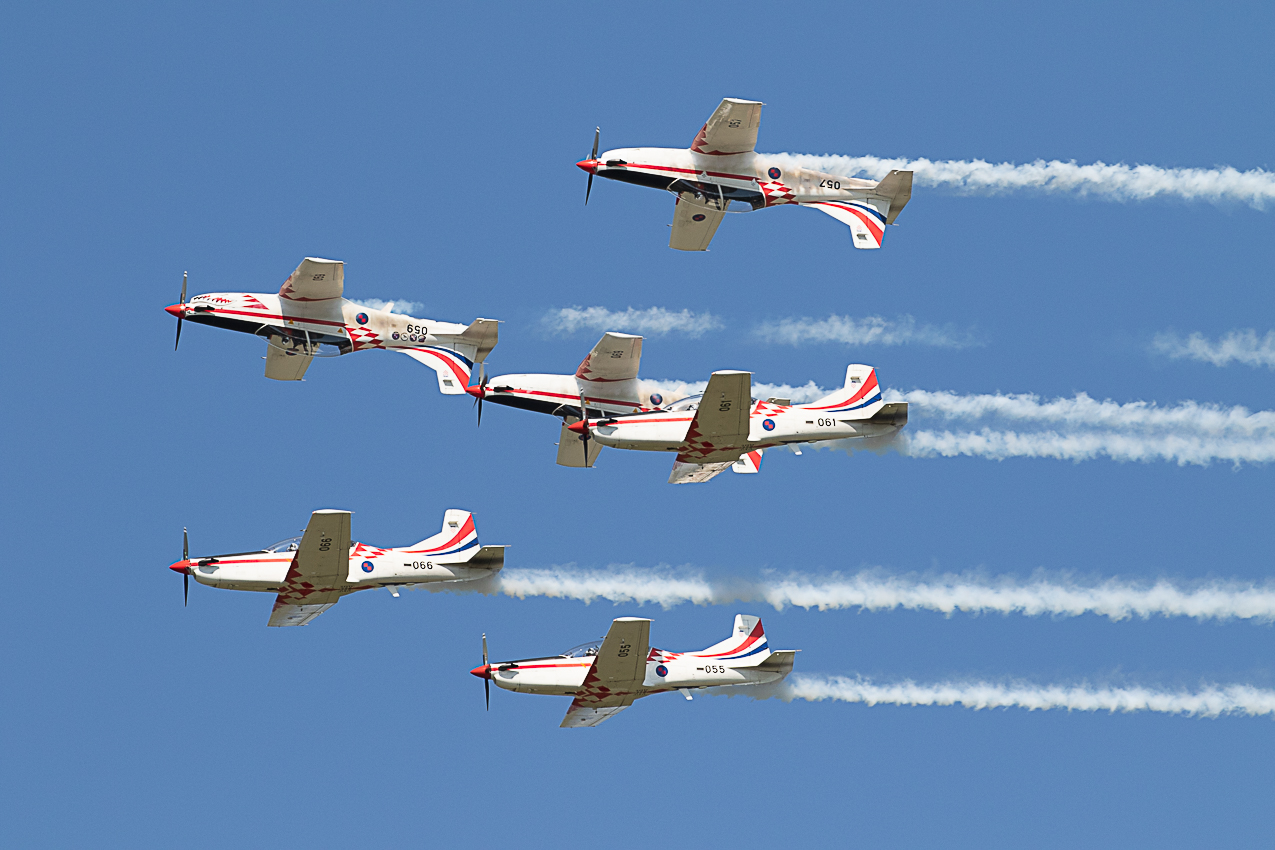
The last team of the morning program was the Baltic Bees from Latvia, normally a six-ship formation flying Aero L-39s, though in Rivolto they flew with four aircraft. The Czech trainer’s performance and the military background of the pilots allow this civilian team to offer a top-level display, enhanced by a striking livery that stands out vividly in the sky.
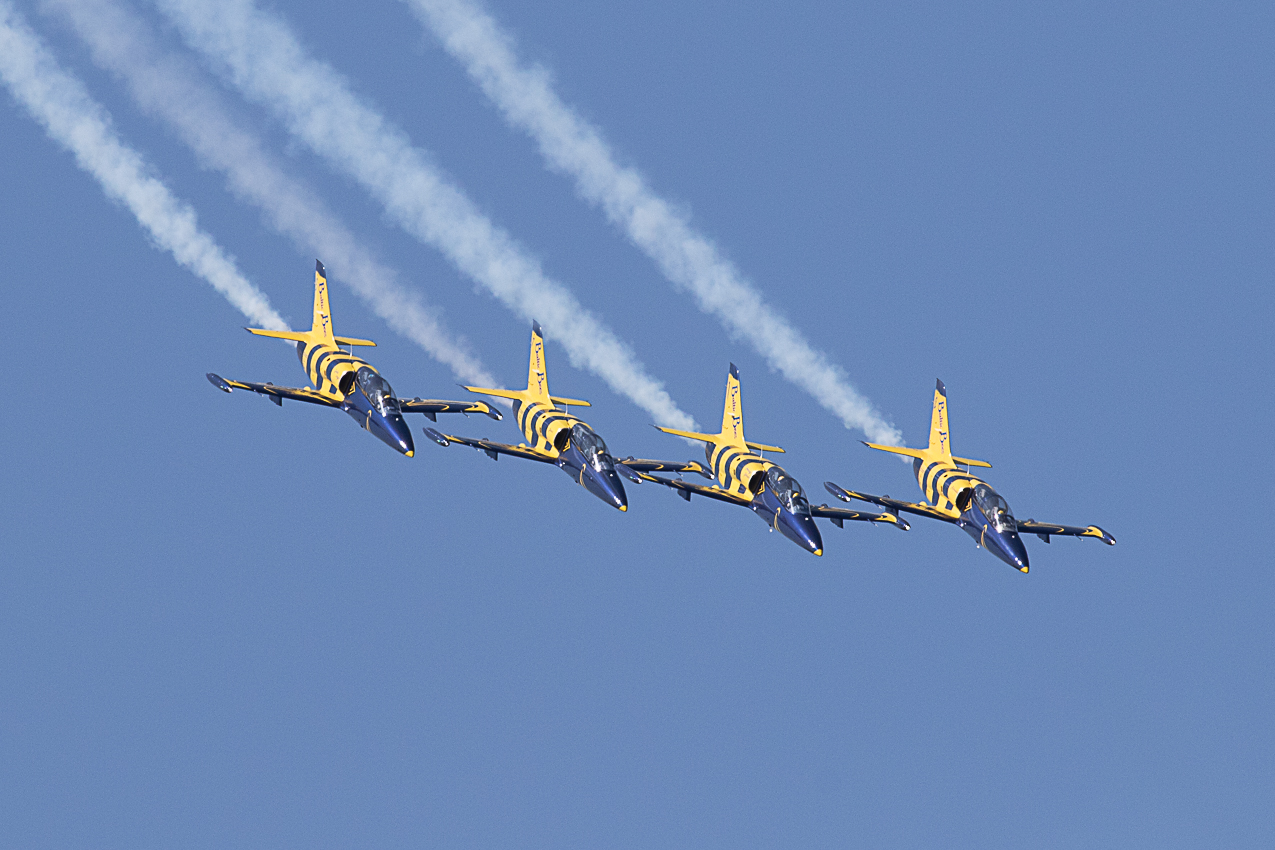
To close the morning the performance of the G-91 of Volafenice, an association born from the efforts of Renzo Catellani to bring back in flight conditions some of the greatest successes of the Italian aeronautics industry of the last century . After restoring two Aermacchis (MB-326E and MB-326K) with Callegari Aeronautics, they embarked on the challenge of returning a G-91R/1A to flight. Overcoming significant hurdles required strong support from the Italian Air Force, which provided personnel and parts (including the engine). Thanks to the collective effort, the aircraft flew again just a few days before the Air Force centennial celebrations in Pratica di Mare in June 2023. Since then, given its limited remaining flight hours, the G-91—painted in the livery it wore during her 18 years with the Frecce—has been reserved for major events like this year’s RIAT and, of course, the Frecce’s anniversary. Enthusiasts hope it will one day join an M-346 and an MB-339 in formation, bringing three generations of Frecce together in the sky.
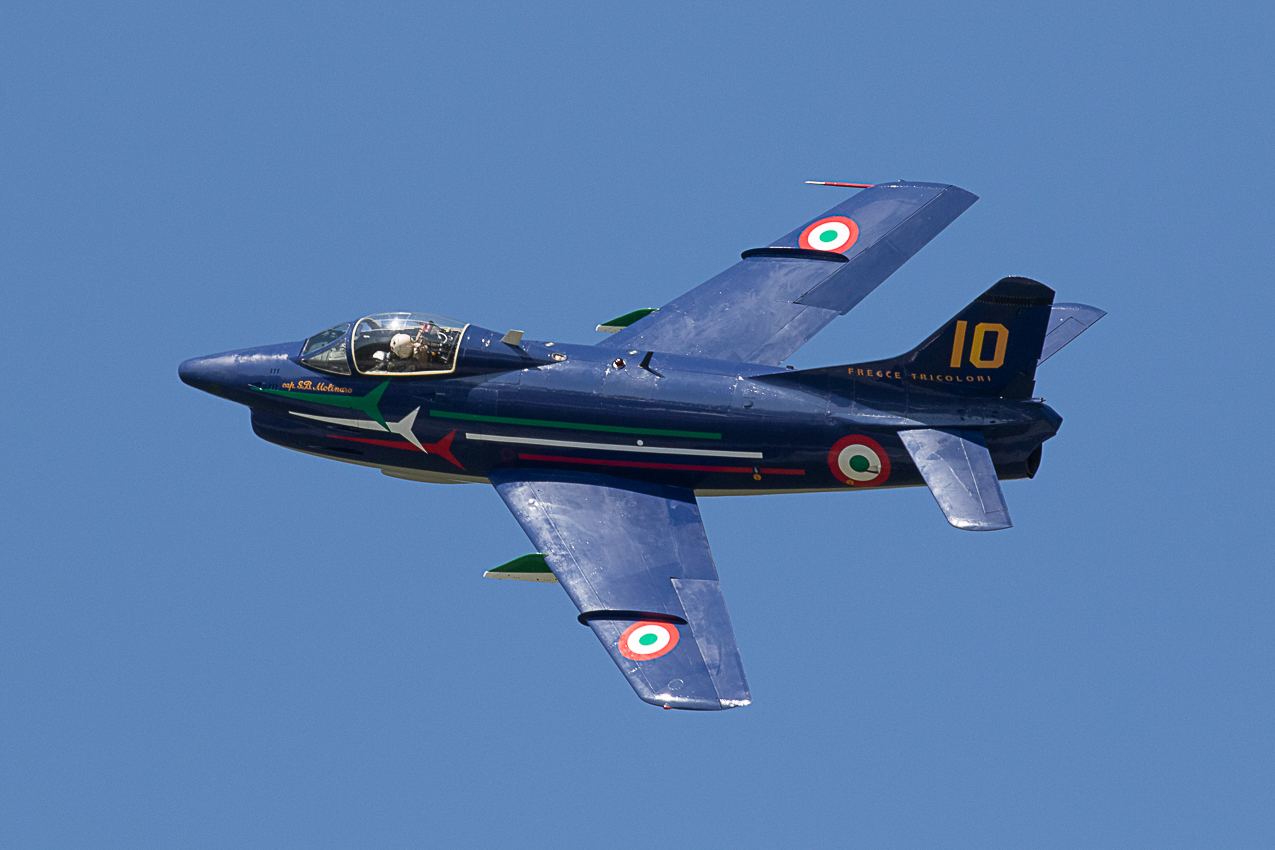
The afternoon program resumed with the traditional flypast of the Italian flag hoisted beneath an HH-139 helicopter, followed by another civilian team: Yakitalia, flying four Yakovlevs (three Yak-52s and one Yak-50). Founded in 1999, Yakitalia is Italy’s longest-running civilian aerobatic team; four of its five pilots are currently active in the Italian Air Force.

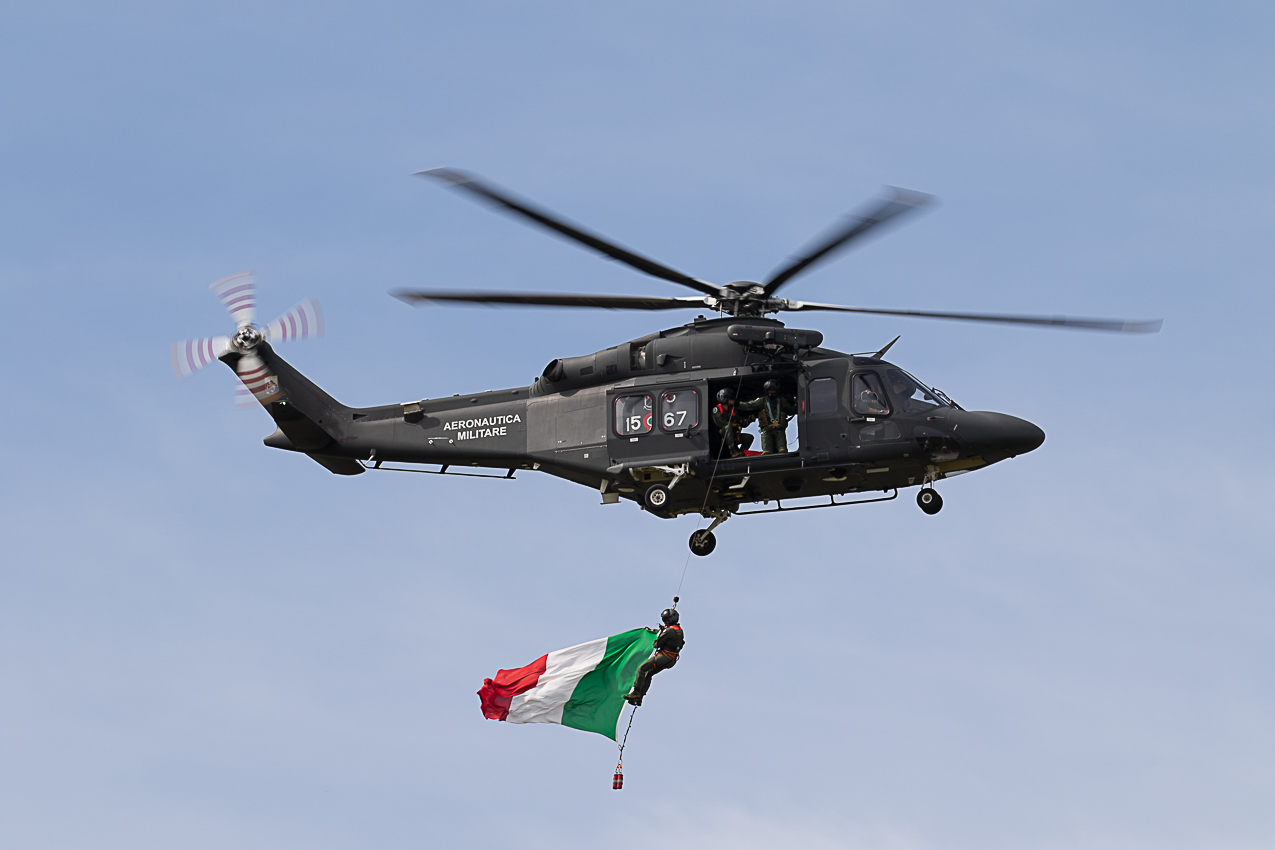
After Yakitalia’s exciting display, the Flying Bulls contributed with two helicopters (a Bell AH-1F Cobra and an MBB BO-105C) and a North American T-28B Trojan. The Cobra joined the Flying Bulls in 2021 after protracted negotiations to persuade the Pentagon to authorize export of a demilitarized combat helicopter to Europe. The AH-1F is one of only two airworthy Cobras in Europe (the other belongs to Heliczech). If the Cobra is a relatively new guest in European airshows, the BO-105 is a veteran: it entered the famous Hangar 7 in 2005 and has since amazed crowds with maneuvers usually reserved for fixed-wing aircraft, thanks to its innovative rigid titanium-blade rotor system that even allows true looping. The Flying Bulls’ Trojan also boasts a distinguished combat history, having served in Laos with the famed Ravens; an unusual feature of its display was the remarkable persistence of the smoke generated by its wingtip pods.



During the afternoon, the Turkish Stars and the Patrouille Suisse took to the skies, both flying different versions of the iconic Northrop F-5 (Canadair NF-5A/B for the Turks, Northrop F-5E for the Swiss), sharing the same red-and-white colors but with understandably different liveries. The F-5’s performance enables spectacular high-speed passes, rapid climbs, and precision formations, including the famous mirror pass by the Swiss soloists, also part of the Turkish repertoire. The Turkish team’s future seems assured by TAI’s Hürjet trainer program, but the Patrouille Suisse faces uncertainty, as their Tiger IIs are slated for retirement in 2027 with no replacement yet identified.


Before the Patrouille Suisse, the Italian Air Force’s RSV (Reparto Sperimentale Volo) flew its Typhoon, while its Spartan and Master displays followed the Swiss team. The Typhoon impressed as always with its power and agility, able to maneuver tightly without leaving the display area. The Master again showcased the qualities behind its commercial success and, given its imminent role with the Frecce, fueled speculation about how the team’s program will adapt to the new aircraft’s performance. The Spartan, however, always steals the show: watching a transport aircraft perform aerobatics as if it were the natural thing in the world always snatches an extra applause, as well as her trademark tactical landing – performed whenever a C-27J operates in “non-permissive” environments.



Next came the Patrouille de France; during their display, their announcer described several new figures added to the program, always a crowd-pleaser. Their future, however, also looks uncertain: their Alpha Jets are nearing the end of their service life, with aircraft numbers dwindling (and the recent loss of two in an accident worsening the situation), as well as a shortage of spare parts. Some rumors suggest replacing them with Rafales, but given the enormous costs involved, this seems highly unlikely.

Before the hosts’ performance, the Italian Air Force staged an interception demo of a slow mover, played by a SOKO Galeb G-2—an early-1960s Yugoslav basic trainer now owned and flown by Croatian businessman Eduard Kovačić. The Galeb was intercepted and escorted to landing by two Typhoons, showing procedures used in such cases (which, depending on the target’s speed, require the Typhoon to fly at high AoA). The Italian contribution was capped by the participation of two F-35s, one A and one B models; the latter demonstrated its hovering ability, yaw rotation, and transition to level flight. On Sunday, the show was also recorded by a Predator UAV circling overhead, transmitting footage live to national TV and social media, sparking an informal challenge among spectators to spot the drone high in the sky.

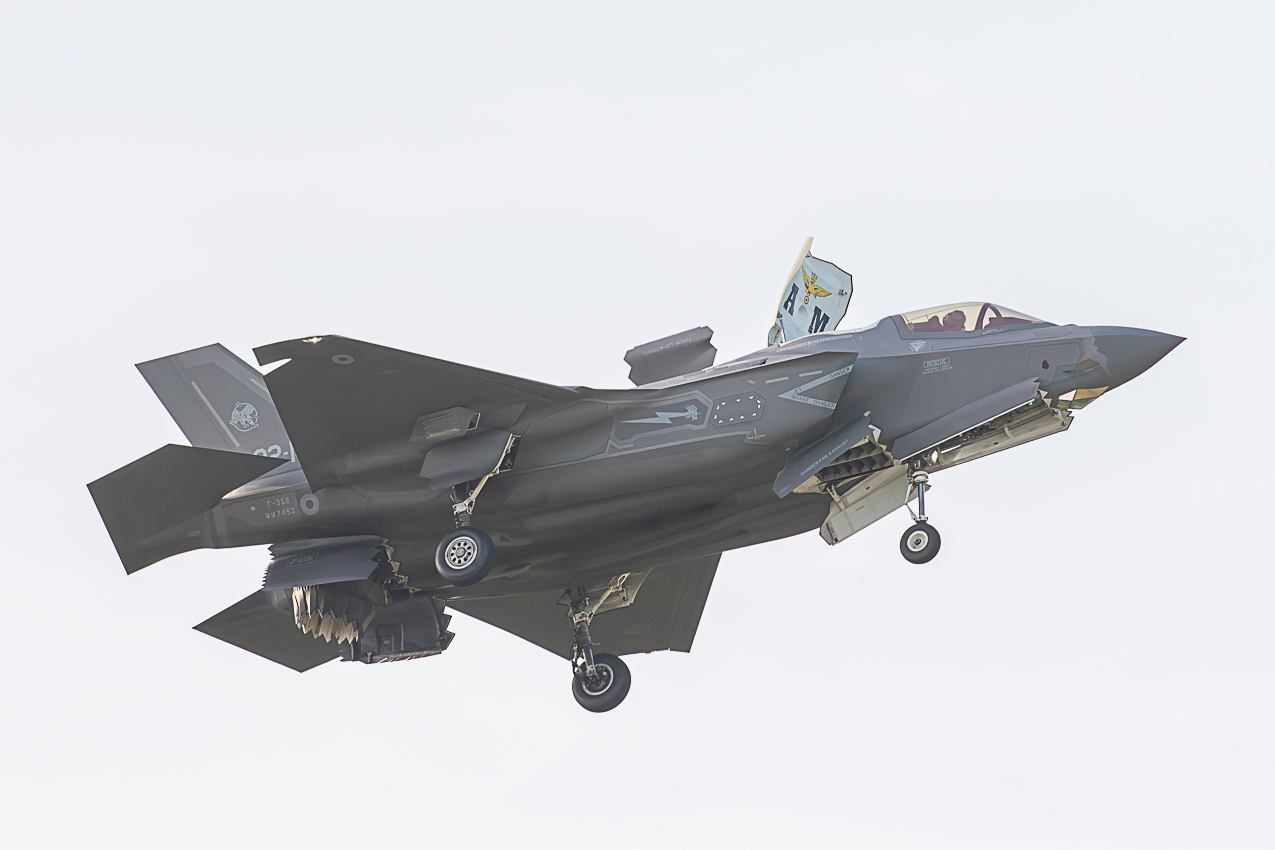
Finally came the most anticipated display: the Frecce Tricolori. The beautiful summer weather allowed them to perform their “high” program, showcasing iconic maneuvers like Apollo 313, the bomb burst, and the soloist’s lomçovak. The “Scintilla Tricolore” figure (Tricolor Spark), introduced in 2015, was dedicated this year to Giorgio Armani, the giant of Italian and global fashion who passed away only days earlier. As already mentioned, this meeting was the last to feature the MB-339. The 2026 season (and perhaps the following one) will still see her flying at shows, but anticipation is growing to watch the Frecce fly the M-346 Master and to discover their inevitably revised programme. Surely the 70th anniversary will be celebrated with the new aircraft, perhaps alongside a G-91 and an MB-339!


Gabriele was born in Turin, Italy, grew up in Sicily and now lives in Rome. His love for aviation goes back to the days when he was seven years old, he started to collect the ‘History of Aviation’ sold weekly at the nearby newsstand. With that, he realized that his goal was to become a military pilot. This dream met a harsh reality when, during the medical tests, a defect in his chromatic sense of sight was discovered.
His interest in photography arose a few years later, when he bought from a colleague his first single-lens reflex camera, a Pentax ME Super. Then everyday life took its toll; working as an IT analyst, studying for an MD in political science and starting a family left no time for enjoying his old interest for aviation. One day in 2008, he decided to revive the passion, starting again to take pictures of aircraft each time he has a chance. Now, using Canon gear, he is striving to become a photojournalist.
Gabriele can be reached at: [email protected]

